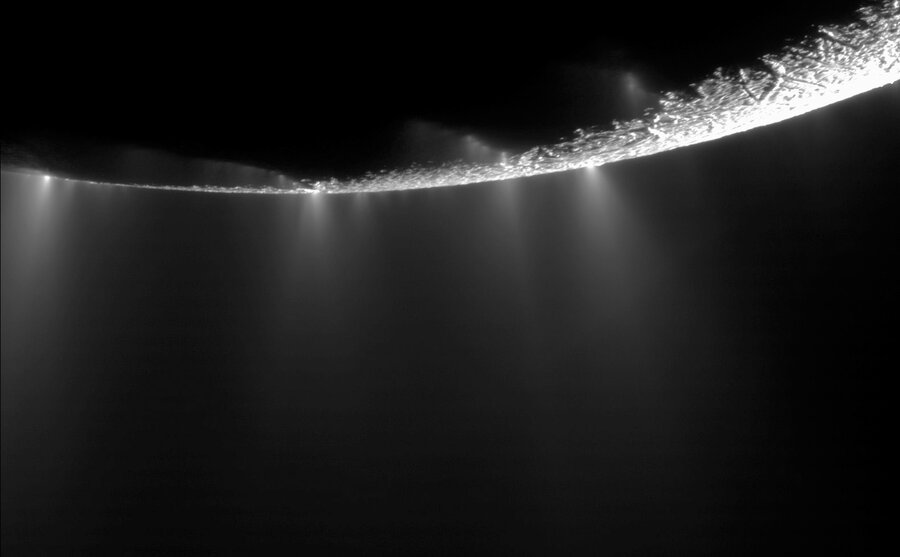A Windex-like ocean sloshes within Enceladus. Why are astronomers excited?
Research on one of Saturn's moons is presenting the best evidence for the potential for life outside Earth that astronomers have found yet, and it hinges on the discovery of a substance that resembles Windex.
NASA scientists have determined that the "fine spray of water vapor, icy particles, and simple organic molecules" found to erupts through the surface of the moon's south pole likely comes from from a global underground ocean. Scientists have speculated that some liquids likely lie beneath the surface of the moon's south pole, but new research published this week in the journal Icarus confirms that a global ocean sloshes beneath the entire surface of the moon.
The ocean's pH is similar to that of window cleaner or soapy water, which suggests the presence of chemical reactions that could be conducive to life.
"We think that what happened on Enceladus, and which could still be happening today, is that there were geochemical reactions between magnesium and iron-rich rocks in Enceladus’ core reacting with ocean water," Christopher Glein of the University of Toronto and the Southwest Research Institute in Colorado, told Irene Klotz of Discovery News.
This indicates liquid water, which excites astronomers because as any Earthling knows, water is one of the major ingredients for life.
“This really is a world with a habitable environment in its interior,” planetary scientist Jonathan Lunine, with Cornell University, said at the American Geophysical Union conference in San Francisco, according to Discovery News.
The bit question now is – does it have hydrogen, too? The process by which water reacts with metallic rocks is called serpentinization, and scientists are now on the hunt for evidence of another key indicator of this process: hydrogen vents. This means a search for hydrogen could be a key stop on the road to locating water. Hydrogen is also a helpful ingredient for the survival of life.
“These findings add to the possibility that Enceladus, which contains a subsurface ocean and displays remarkable geologic activity, could contain environments suitable for living organisms,” John Grunsfeld, an astronaut and administrator at NASA said in a press release. “The locations in our solar system where extreme environments occur in which life might exist may bring us closer to answering the question: are we alone in the Universe."
Because all these life-like chemical compounds get almost ejected from the planet in plumes, they offer astronomers searching for life among the stars a window into the interior of the moon that would otherwise be very difficult and costly to access, as The Monitor's Pete Spotts previously reported:
Of all the objects in the solar system that might be hospitable for life as we know it, no place is shouting louder for attention than Saturn’s moon Enceladus ... In the search for life beyond Earth, Enceladus is particularly enticing because of its plumes. When researchers sample the plume, they are in effect sampling the under-ice ocean. No landing or drilling required.







